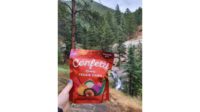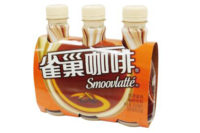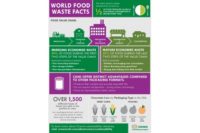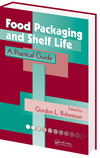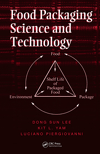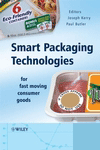Materials Technology: Sustainable packaging
A shrinking waste line
Sustainable packaging materials help brands reduce product and packaging waste, attract consumers and ultimately turn a profit.

A new line of earth-friendly packaging is made from renewable plant resources.

On-The-Go Boxes are made from a polylactic resin derived entirely from plants.

The Monadnock Envi Label is made from 100% FSC-certified, post consumer waste fibers made to withstand the rigors of challenging print images, bottling lines and cold, wet coolers.

A biodegradable barrier tray will enable retailers to move away from CPET and aluminum toward a sustainable solution that is ovenable, microwaveable and compostable.




Sustainability will become the number one challenge facing the packaging industry in the next decade, having a key influence on business strategies, states a new report from Smithers Pira, The Future of Sustainable Packaging to 2018. According to the report, the market for sustainable packaging is growing much faster than the overall packaging market. The sustainable packaging market was estimated to be valued at $144 billion in 2008, could potentially reach $190 billion this year, and is on course to be worth $244 billion by 2018.
According to Chuck Spear, publisher, Smithers Pira, the packaging industry is aware of the increasing role sustainability is playing in business decisions for corporations. “The industry is already gearing up to face the growing demand for more sustainable packaging with innovative changes in design to reduce content and increase the use of recycled or degradable content.”
By definition, sustainable packaging consists mainly of recycled materials packaging, reusable packaging and biodegradable packaging. Recycled packaging accounts for almost 90% of today’s sustainable packaging market, reusable packaging accounts for 9% and a small but growing market segment is the biodegradable packaging market which has a current market share of just 1% but will show the strongest growth in the next five years.
Back to nature
Researchers have spent the last few years working with a variety of bio-based sustainable materials—coming from the land and the sea. The Paint Research Association has developed an eco-friendly food packaging coating product, called PlantPack, made from seaweed extracts and starch. It can be applied to paper and cardboard as a spray. Meant to be a sustainable alternative to petroleum-derived coatings products, the developers expect there to be big demand for the product when it makes its expected debut in October 2014.
But no need to wait; some eco-friendly packaging options are on the market right now. Greenware On-The-Go Boxes from Fabri-Kal, are made from NatureWorks’(www.natureworksllc.com) Ingeo biopolymer, a polylactic (PLA) resin derived entirely from plants. The process to create Ingeo makes use of the carbon stored in plants by photosynthesis in the form of dextrose sugar. The carbon and other elements in these sugars are then used to make a biopolymer through a process of fermentation and separation. The resulting resin can then be injection molded into plastic goods. The biopolymer is similar to polystyrene and applications can be clear, opaque, flexible or rigid and exhibits tensile strength and modulus comparable to hydrocarbon-based thermoplastics. Much like polyester, it resists grease and oil, and offers flavor and odor barrier.
Also rooting its business in plants is Precision Color Graphics, a pre-press, printing, and packaging company, which has received a patent for its bipolymer lined multi-layer bags and pouches for the line of Ecoterah packaging. The new line of earth-friendly packaging is made from renewable plant resources.
“Our clients, whether they’re packaging pet food or potato chips, want to provide their customers with a 100% compostable product upon the end of its life cycle, notes John Goeden, president of Precision Color Graphics. “We used sustainable elements for all packaging components -- the layers, varnish, ink and adhesives.”
Another packaging component not to be overlooked is the label. Monadnock Paper Mills, Inc. now offers an uncoated product designed specifically for craft beers. The Monadnock Envi Label is made from 100% FSC-certified, post consumer waste fibers made to withstand the rigors of challenging print images, bottling lines and cold, wet coolers.
“For an uncoated, textured feel, there was always a trade-off,” says Tim Boyd, market segment manager of Monadnock Paper Mills. “If you wanted a label to stand up to submersion and not peel, disintegrate or fall off, you had to sacrifice by using mostly virgin pulp. Conversely, if you wanted to be eco-conscious, there was always a compromise in how that material would stand up in the print process or in the cooler.”
Reducing the carbon footprint
KCC Packaging has developed what is being called the “single biggest step change in reducing the carbon footprint of ready meal retail.” A biodegradable barrier tray will enable retailers to move away from CPET and aluminum toward a sustainable solution that is ovenable, microwaveable and compostable.
“Buyers need more than a great sales story about carbon-friendliness to make a decision about how they package items,” says KCC’s chartered environmentalist Kevin Clarke. “Financial directors want to reduce their carbon credits, and ready-meal packaging is currently a big fat negative on the ‘green’ balance sheet.”
There are also savings to be earned by recognizing that sustainability plays a critical role in the packaging life cycle. “The value of packaging is often undervalued by businesses and consumers, who take into account only the packaging’s end of life options,” says Spear of Smithers Pira. “The packaging industry is forming industry alliances to help educate businesses about the overall environmental footprint of packaging that takes into account life cycle aspects.”
Education and forming sustainability programs can help differentiate a company by appealing to the consciousness of consumers. They can also serve as a platform for new product and market development, and ultimately as a means of increased profitability.
Give ‘Em What They Want
When it comes to food and beverage packaging, consumers are most likely to pay more for value-added features that relate to freshness and sustainability-according to a global study conducted by Ipsos InnoQuest.
Consumers worldwide were given a list of potential packaging features and asked which ones they would be willing to pay more for. Consumers reported they would pay more for packaging that keeps food fresh longer (55%) and packaging that is environmentally-friendly (55%).
Following freshness and environmental benefits, consumers said they were likely to pay more for packaging that is re-usable (42%).
“The fact that consumers are looking (and willing to pay more) for environmentally friendly packaging is a bit surprising,” says Paul Crowe, PhD, senior vice president, Ipsos Marketing, Ipsos InnoQuest. “But consumers are a moving target. It is essential to stay on top of (or better yet anticipate) trends in packaging. The competitive landscape will only become more cluttered and packaging impacts that first moment of truth at the store and can also help drive (or impede) repeat once it gets home.”
Looking for a reprint of this article?
From high-res PDFs to custom plaques, order your copy today!




